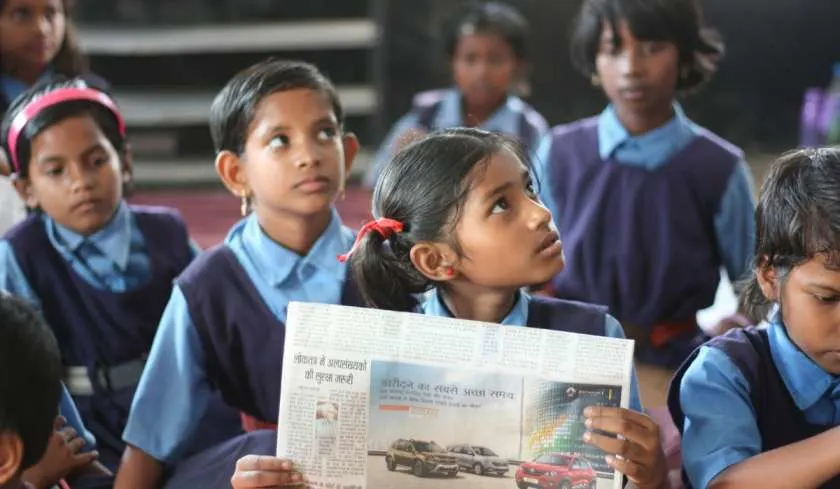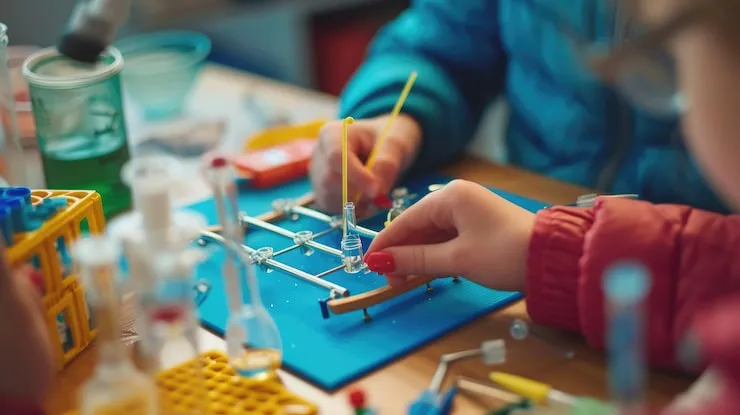A lot of times, the real news isn’t loud. It’s not on the front page. It happens quietly—inside homes, on dusty roads, in corners of classrooms where no one looks. And right now, something like that is happening in Gujarat. It’s not a protest. Not a flash flood. It’s a girl walking into school… instead of walking out forever.
That’s what Namo Lakshmi Yojana is doing. Behind this name is a number—1,250 crore. A massive number. But what it really means is support. For girls. For their studies. For their right to stay in school when the world often says “stop now.” Let’s talk about it. Not in a headline way, but the way it’s being lived. In villages. Towns. In families that never thought twice about pulling a daughter out after Class 8. Until now.
What’s It All About, Really?

This scheme? It’s for girls in Classes 9 to 12. And it’s direct. No middlemen, no forms lost in school drawers, no waiting. The money goes straight into the bank account—10,000 for Classes 9 and 10, and 15,000 for 11 and 12. No one says you have to use it only for schoolbooks. If you want to buy a cycle to reach school? That’s fine. Want to pay for tuition because math is tough? Go ahead. New chappals so you can walk to school with some dignity? Sure.
Why Now? And Why Girls?
There’s a pattern in many families. Boys are kept in school longer. Girls? Not always. Once they hit 13 or 14, a lot of things change—at home, in the body, in society. Suddenly, people say things like “enough study now,” “marriage age is coming,” “she can help at home.” And that’s where this scheme steps in. See, education drops sharply for girls after Class 8. That’s the danger zone. And this scheme? It’s aimed right there. Not when it's too late, but right when they need it the most. Money doesn’t solve everything. But it helps. It tells the family: “Don’t rush her out. Let her learn.”
So, Where’s This Money Going?
1,250 crore. That’s a lot. But here’s how it’s being used.
- A chunk goes directly into accounts of girls who qualify.
- Some is kept for outreach—so even families in remote hills or tribal belts know this scheme exists.
- Schools are getting help too. Notebooks, awareness meetings, and extra staff to check if everything’s reaching the right student.
They’re even holding community meetings in villages. Mothers come. Sometimes even grandmothers. They talk. And it works. When women hear other women saying “my girl is getting money to study,” something changes.
Read more:- Kerala’s 2025–26 Education Budget: Student And School Updates
What Happens When You Give a Girl 10,000 a Year?
Here’s what she gets a little freedom that’s not a word we use often, but it fits. She can buy books without asking twice. She can take a rickshaw when it rains. She might skip helping in the kitchen for evening classes. She might—just might—dream of something more. Some girls are using the money for coaching classes. Others are just using it for shoes, pens, lunch boxes. Small things, maybe. But the kind that make her feel like school is hers, not a borrowed space.
Girls Are Staying. And That Alone is Big.
Teachers have started noticing. Not because there’s a dashboard saying “impact seen.” No. They see it in the faces in class. Fewer empty benches. More questions. More smiles. In some tribal areas, dropout rates have dropped—not dramatically, but clearly. And sometimes, all it takes is a little money, and a lot of trust. A teacher in Banaskantha said, “One girl had stopped coming. She came back two months later. Said her father saw the money and told her to go back.” You can’t measure that in data. But it’s real.
What’s Special About This Scheme?
There’ve been schemes before Scholarships, Free books, Meals But Namo Lakshmi is different. First, because the money goes to the girl Directly It tells her: your matter and You’re trusted. Second, it hits that fragile window of time—ages 14 to 17—when most girls fall through the cracks And third? It’s not just about education It’s about keeping girls visible Active Present. In homes where girls quietly disappear from school, this money is like a light.
Where It’s Still Falling Short
Let’s not pretend it’s perfect. Some issues are real.
- Some girls don’t have bank accounts.
- A few families take the money but still pressure the girl to drop out.
- Internet in remote areas delays transfers.
And of course, 10,000 isn’t enough in urban areas. But the point isn’t how big the money is. The point is what it stands for. It’s Not Just About Staying in School. It’s About Changing What’s Expected.
There’s this idea, buried deep in culture, that a girl’s education doesn’t matter as much. This scheme chips away at that. Not loudly. Not dramatically. But with every girl who chooses school over chores, notes over needles, it’s shifting something. In villages where the highest aspiration was “marry well,” now some girls say, “Maybe I’ll teach.” Or, “I want to join the police.”
And the Mothers? They’re Watching.
Some of the strongest support is coming from women who never got to study themselves. They watch their daughters wake up early, pack their bags, walk long distances. They see that the government, for once, is putting its money where the girls are. And they’re quietly proud. One woman in Surendranagar said, “I never went past Class 5. But my girl will wear a college ID card.” No policy document will tell you that. But it’s happening.
What’s Next?
Gujarat says this is just the start. They want to add:
- Career help for girls in Class 11-12
- Digital literacy classes
- Mentorship from local women who made it into jobs or colleges
Because it’s not just about keeping girls in school. It’s about helping them thrive there. The Namo Lakshmi Yojana doesn’t look flashy. There are no inauguration ceremonies, no posters on every wall. But it's working in the way that matters—quietly, personally, steadily. For some girls, it’s just a number in their bank. For others? It’s a doorway. A reason to stay. A reason to believe someone out there thinks her education matters. And in the long run? That belief might be worth more than 1,250 crore.













